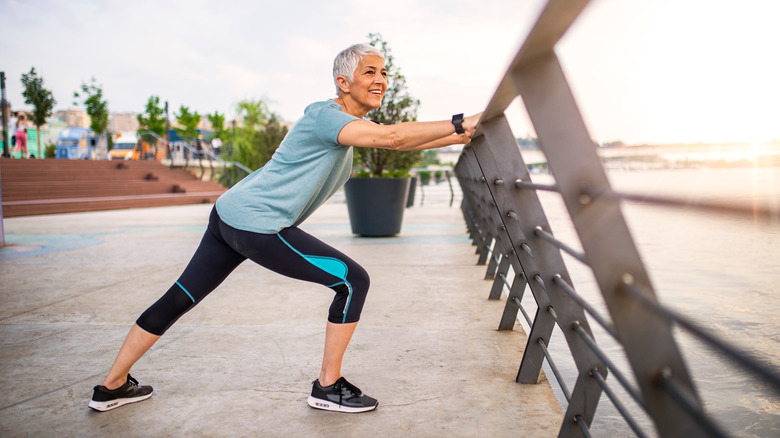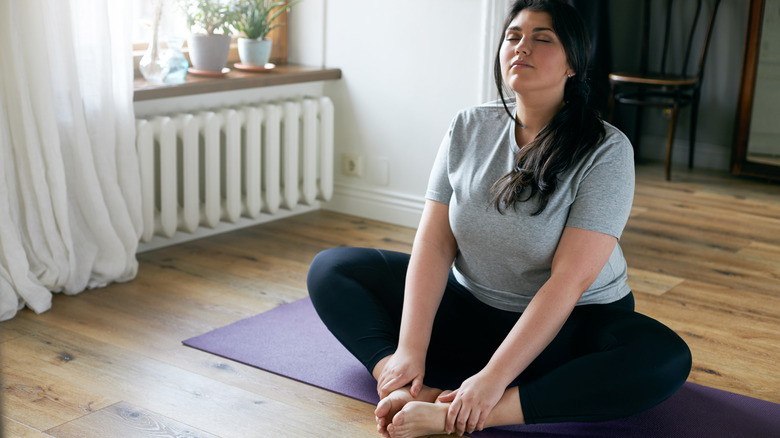This Is How Long You Should Stretch After Any Workout
Most experts agree that stretching is beneficial. The American Council on Exercise (ACE) explains that it enhances flexibility, which is one of the five components of fitness. Stretching makes your muscles more pliable and reduces the risk of injury. Other benefits are improved muscle function and blood circulation. When you stretch, it reduces tension in your muscles and can help relieve pain related to exercise. Stretching your hamstrings and hip flexors could even lower your risk of low-back pain.
Stretching should be done more than occasionally. In fact, it needs to be done on a regular basis to really reap the benefits, according to Harvard Health. If you're overwhelmed with where to start, Dr. David Nolan, a physical therapist at Massachusetts General Hospital suggests beginning a routine that stretches the muscles that support mobility — your calves, quadriceps, hamstrings, and hip flexors. If you can, make time for your neck, shoulders, and back as well.
Longer is better for post-workout stretching
Stretching after a workout is ideal because your blood circulation to your joints and muscles makes them more flexible (via WebMD). The National Health Service (NHS) suggests taking about five minutes to stretch after a workout. Areas to focus on include your buttocks, hamstrings, inner thighs, quadriceps, and calves. When stretching, you should hold the stretch for about 10 to 15 seconds. This aligns with guidelines set forth by experts from the American College of Sports Medicine (ACSM) who suggest holding stretches for at least 10 to 30 seconds for most adults. Older adults should aim for holds up to 60 seconds for greater flexibility.
Harvard Health, on the other hand, explains that all adults should spend about 60 seconds on each stretch for the best results. You don't have to hold each stretch for 60 seconds, but rather for a combined total. For instance, you can hold a stretch for 20 seconds and then repeat it twice.
Static stretches are best for after exercising
There are two kinds of stretches you can do: dynamic stretches and static stretches. Dynamic stretching, such as hip circles and walking lunges, involves actively moving your muscles. Static stretches, like side bends and hamstring stretches, are more stationary. Luke Hughes, personal trainer and the founder of OriGym, told LiveScience, "Static stretching requires you to move a muscle as far as you possibly can without feeling pain, holding the stretch for a total of 20-45 seconds, repeating multiple times."
When it comes to what types of stretching you should do after exercising, experts say that static stretches are best. Dr. Ann Rex, D.O., explained to Cleveland Clinic that one reason for this is that static stretching after a workout could prevent muscle soreness by allowing your muscles to stretch back to their original length, while UW Health Fitness Center exercise specialist Jude Sullivan tells UWHealth that static stretches feel especially good after a workout because your muscles are already warm and loosened up and the stretching helps the body return to a state of rest.



